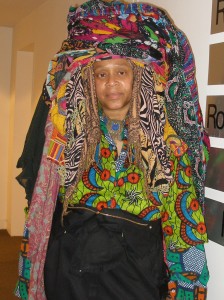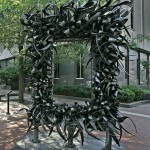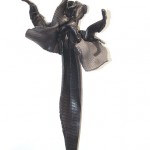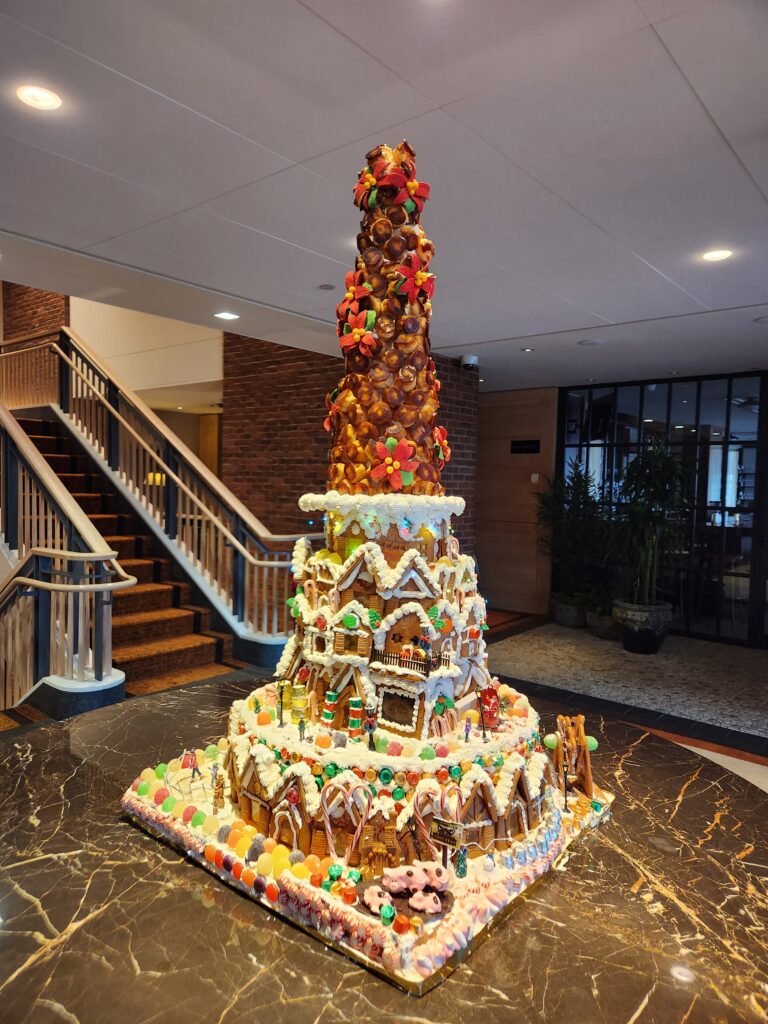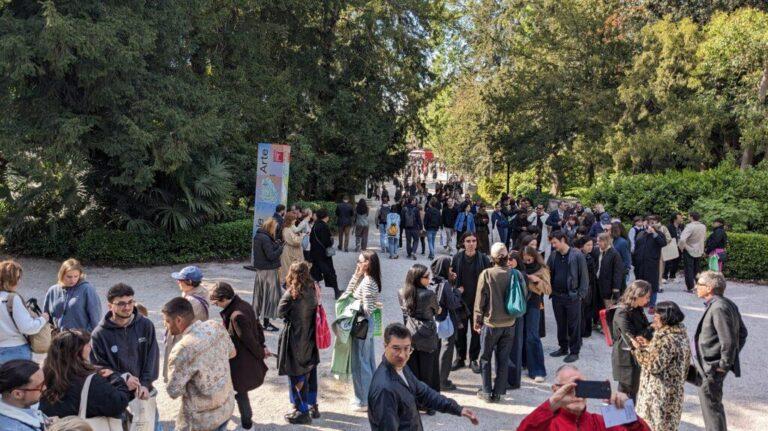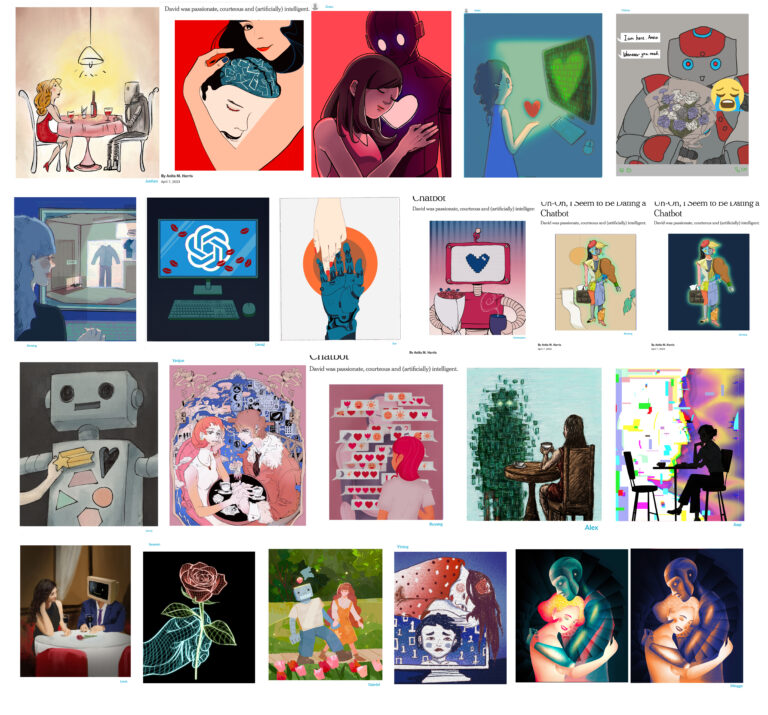Another must see: Chakaia Booker’s big black sculptures made from rubber tires, at the DeCordova Museum in Lincoln, MA.
Outdoor sculptures include a huge “picture frame” made of tire scraps assembled on some sort of armature– through which you can see a corner of the museum . Also, inverted tee-pee-like structure, composed of V-shaped scraps, on a scaffolding.
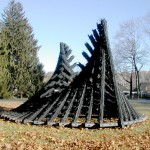
Indoors: complex forms, freestanding and on the walls–which embody shapes, textures, and visually complex abstract scenes “referencing African textiles and body decoration to evoke issues of black culture, identity, gender, and environmentalism,” as the DeCordova Web site explains.
The sculptures also bring up important questions about relationships of man-made waste materials, landscape, and culture.
Some of the sculptures look like whimsical worms or insects; despite the overall “heavy” message of the show, these are simply fun….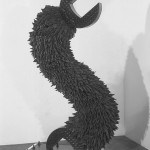 and so highly textural that you want to touch them. (I have to admit…my friend E and I each copped a feel—tho appearing soft, most of the rubber pieces are hard–before discovering a demonstration area near the exhibit where you can actually play with tire materials).
and so highly textural that you want to touch them. (I have to admit…my friend E and I each copped a feel—tho appearing soft, most of the rubber pieces are hard–before discovering a demonstration area near the exhibit where you can actually play with tire materials).
As the Decordova points out on its Web site:
Formally, Booker’s work is engaged in dialogue with the history of Western sculpture, from the ancient and classical tradition of the human figure through the Modernist non-objective sculpture of the twentieth century.
What sets her work apart, and significantly expands upon the history of sculpture, is her ability–with rubber tires–to create surfaces on objects that resemble skins, feathers, scales, spikes, armor, or attire.
In and Out refers simultaneously to the indoor/outdoor placement of the sculptures, the complex dialogues among surface/structure and mass/volume/void in each work, and also to the sexually suggestive images in some of Booker’s work.
I confess that I didn’t catch the sexual suggestions…but maybe that’s the wanting to jump into it, part.
I was repelled (and fascinated) by a huge bug-like sculpture, 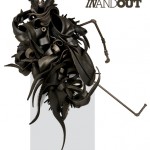 but did find the patterns beautiful and mesmorizing.
but did find the patterns beautiful and mesmorizing.
Throughout the indoor exhibit, I marvelled at Booker’s creativity–and, while, at first, felt a bit put off by all of the black, was impressed with how effective it was in highlighting spatial relationships, recognizable objects, African fabric and body art patterns, and abstract form.
[Added 5-25-10: and thinking more about it–perhaps the all-black sculptures makes a further, important point about power and variation of and within black cultures, nations, communities and individuals. Brava! AMH]
The show will be up through August 29, 2010.
—-Anita M. Harris
New Cambridge Observer is a publication of the Harris Communications Group of Cambridge, MA .
